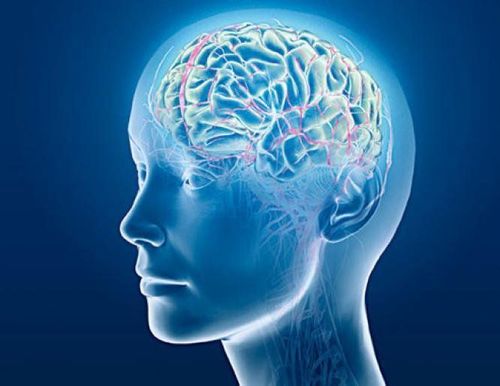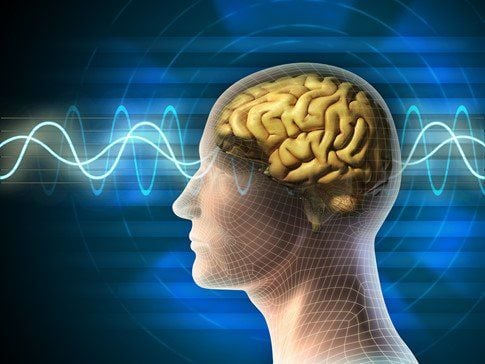This is an automatically translated article.
Cerebral venous thrombosis (CVT) is less common than most other types of stroke but can be more difficult to diagnose and have more serious complications. This pathology is often missed or diagnosed late, because it is easily confused with other acute neurological conditions. Therefore, early detection and proper treatment will help reduce the risk of developing dangerous complications, even death.
1. What is cerebral venous thrombosis?
1.1 Definition Cerebral venous thrombosis (CVT) is a rare disease and accounts for 0.5-1 % of all strokes, occurring due to impaired return of cerebral veins due to blood clots. local blood. Primary cerebral venous thrombosis usually has no specific cause, while secondary cerebral thrombosis is the result of intracranial or systemic diseases.
In contrast to arterial strokes, cerebral venous thrombosis occurs more frequently in young adults and children, with an average age range of 33 to 42 years. The proportion of women is often three times higher than that of men, the imbalance may be due to the increased risk of CVT related to pregnancy, postpartum period and oral contraceptives.
1.2. Pathogenesis: Cerebral venous thrombosis is less common than arterial thrombosis because of the extensive communication between the cortical veins, allowing the development of alternative venous drainage pathways after occlusion.
Cerebral venous thrombosis has a mechanism similar to that of other venous thromboembolic conditions and is the result of vascular damage, impaired blood flow, and hypercoagulability (Virchow's triangle) leading to weight loss. balance between thrombosis and fibrinolysis, which can easily lead to progressive venous thrombosis.
There are at least two different mechanisms that may contribute to the clinical features of cerebral venous thrombosis:
Once formed, cerebral venous sinus thromboses interfere with the drainage of blood from brain tissue, lead to increased venous pressure, decreased capillary perfusion pressure and increased cerebral blood volume. Although initially compensated by dilation of the cerebral veins and of the accessory veins, continued elevation of venous pressure can lead to disruption of the blood-brain barrier and cause angioedema and plasma leakage. into the interstitial space. It eventually leads to decreased cerebral blood flow (CBF), decreased cerebral perfusion pressure, and cerebral infarction. Dural sinus occlusion results in decreased cerebrospinal fluid (CSF) absorption and increased intracranial pressure, often associated with maxillary cerebral venous sinus thrombosis.
2. Risk factors for cerebral venous thrombosis
Gender factors :
Use of oral contraceptives. Postpartum women. Pregnant women. Use hormone replacement therapy. Systemic diseases:
Iron deficiency anemia. Malignant disease. Myeloproliferative disease. Loss of water. Enteritis. Systemic lupus erythematosus. Behcet's disease. Thyroid disease. Neurological sarcoidosis. Fat. Acquired or hereditary hypercoagulability:
Antiphospholipid syndrome. MTHFR gene mutation or hyperphosphatemia. Factor V Leiden mutation. Prothrombin gene mutation. Protein S or Protein C deficiency. Antithrombin deficiency. Nephrotic syndrome . Primary polycythemia vera. Increased platelets. Infections:
Ears, nose, throat, sinuses, face, neck. Central nervous system. Infection at another site. Mechanical impact:
Neurosurgery or surgery on the face, neck, ears, nose, throat. Lumbar puncture. Traumatic brain injury. Drug use:
Cytotoxic drugs. Lithium . Vitamin A Immune Globulin Intravenous. Vascular malformation
Arterial fistula. Arterial malformation. Other venous abnormalities.
3. Diagnosis of cerebral venous thrombosis
3.1. Clinical symptoms Headache is the most common symptom of cerebral venous thrombosis, reported in about 90% of cases and the sole symptom in about 25% of patients. However, headache associated with cerebral venous thrombosis does not have specific diagnostic features, although it is often progressive with onset within hours or days. Severe headache may be the first symptom and is often associated with subarachnoid hemorrhage. Indications for cranial imaging are recommended when there are suspicious symptoms including:
Patients with risk factors for cerebral venous thrombosis such as using oral contraceptives, women who are pregnant or in the postpartum period fertility, malignancy, anemia. New-onset headache or headache with features different from previous primary headaches. Symptoms of increased intracranial pressure such as papilledema. New focal neurological signs appear. Change consciousness. Convulsions, seizures. In addition, symptoms of cerebral venous thrombosis range from mild to life-threatening, depending on the sinuses and veins involved, the extent of brain parenchymal damage, the chronic condition, and the effect on pressure. intracranial
3.2. Subclinical Computed tomography (CT-scan) of the brain: The image is normal in 30% of cases of cerebral venous thrombosis and the findings are nonspecific. However, CT-scan is often the first investigation performed in clinical practice, and is useful to rule out other acute or subacute brain disorders. Magnetic resonance imaging (MRI): is the most sensitive imaging method to demonstrate venous thrombosis or dural sinus obstruction. Cerebral angiography with CT (CT venography): Often used in hospitals that do not have MRI techniques, or for patients with contraindications to MRI. Use in conjunction with CT-scan of the brain can add significant information in cases of suspected cerebral venous thrombosis. However, its use may be limited because of the low resolution due to the small deep and cortical venous systems, the risk of contrast reactions and radiation exposure. Cerebral angiography by MRI (MR venography). Laboratory tests are of no value in diagnosing and excluding cerebral venous thrombosis. The American Heart Association/American Stroke Association (AHA/ASA) guidelines recommend that tests such as complete blood count, blood biochemistry, Prothrombin time, Activated Partial Thromboplastin time be performed for Patients with suspected cerebral venous thrombosis. These tests may reveal the presence of conditions that contribute to the development of the disease such as an underlying hypercoagulable state, infection, or inflammatory process. D-dimer: Elevated plasma D-dimer levels support the diagnosis of cerebral venous thrombosis, but a normal D-dimer does not rule out the diagnosis in patients with suggestive symptoms and factors cause disease. 3.3. Differential diagnosis Other causes of headache. Idiopathic raised intracranial pressure. Meningitis Brain tumor, brain abscess. Brain hemorrhage . Subdural hemorrhage. Cerebral ischemic stroke. Paroxysmal hypertensive crisis. Preeclampsia, eclampsia (pregnant women)
4. Is cerebral venous thrombosis dangerous?
Cerebral venous thrombosis can lead to death or permanent disability, but usually has a good prognosis if detected early and treated properly.
4.1. Early complications and death Approximately 5% of patients die during the acute phase of the disease. Most premature deaths are the result of cerebral venous thrombosis. The main causes of death include brain herniation due to multiple lesions or diffuse cerebral edema, epilepsy, medical complications, pulmonary embolism.
Severe symptoms that may occur several days after admission include impaired consciousness, convulsions, increased headache intensity, mental disturbances, and decreased vision.
Predictors of 30-day mortality:
Decreased consciousness. Change in mental state. There is deep vein thrombosis. Right hemisphere hemorrhage. Injury to the posterior cranial fossa. One study found that the mortality rate in patients with cerebral venous thrombosis is reduced many times with early detection, good care and proper treatment.
4.2. Long-term complications Prognostic factors for long-term bad complications :
Infection in the central nervous system. Deep vein thrombosis. Malignant diseases. Bleeding images on CT-scan or MRI. Glasgow score < 9 on admission. Abnormal spirit. Age > 37. Male gender. Female patients had a significantly higher rate of complete recovery at six months than male patients (81 vs. 71%) and female patients had a lower mortality rate than male patients (12 vs. 20%).
5. Treatment of cerebral venous thrombosis
5.1. Goals Restore clogged sinuses or veins. Prevents the passage of blood clots, especially to the cerebral bridging veins. Preventing venous thrombosis in other parts of the body, especially pulmonary embolism, and preventing the recurrence of cerebral venous thrombosis. 5.2. Acute Phase Anticoagulation
First-line treatment is intravenous heparin or subcutaneous low-molecular-weight heparin (LMWH) for adults with symptomatic cerebral venous thrombosis and no contraindications. determined. Patients who have responded and are stable can be switched to oral anticoagulants for a period of 3 to 6 months. Treatment of raised intracranial pressure and brain herniation
Hospitalization to the intensive care unit. Lie with your head high. Use mild sedation as needed. Perform osmotic therapy (Mannitol or hypertonic saline). Increase ventilation to a target partial pressure of Carbon dioxide (PaCO2) of 30 to 35 mmHg. Monitor intracranial pressure. Although glucocorticoids, especially intravenous dexamethasone, are prescribed in many hospitals for the treatment of raised intracranial pressure. However, it is not recommended for the treatment of cerebral venous thrombosis in the absence of an underlying inflammatory disorder such as Bechet's disease or systemic lupus erythematosus. Antiepileptic
Valproate or Levetiracetam are preferred over Phenytoin, as they have fewer pharmacological interactions with oral vitamin K antagonist anticoagulants such as Warfarin. 5.3. Treatment after the acute phase Anticoagulation
It is recommended to use direct oral anticoagulants instead of Warfarin. For patients with renal failure, low molecular weight heparin is preferred. Duration of treatment: Cerebral venous thrombosis with transient risk factors: 3 to 6 months. Idiopathic cerebral venous thrombosis: 6-12 months. Cerebral venous thromboembolism, first time but severe: Use for life. Aspirin
is effective for patients who have received adequate anticoagulation after the first episode of idiopathic cerebral venous thrombosis. Epilepsy
For patients with brain parenchymal damage associated with seizures, antiepileptic medication is recommended to be continued for at least one year. Headache
If there is no brain damage on imaging, a lumbar puncture should be performed to rule out chronic raised intracranial pressure. Treatment of chronic raised intracranial pressure includes topiramate, acetazolamide, repeat lumbar puncture, narrow sinus stent, or lumbar peritoneal drainage. Other conditions
Vision loss Psychiatric complications : Antidepressants can be used as needed. Subsequent pregnancy: Low molecular weight heparin treatment during pregnancy or postpartum for women with a history or risk of cerebral venous thrombosis. Limit the use of oral contraceptives. Thrombosis of the cerebrovascular system in general and cerebral venous thrombosis in particular is a rare disease, so the diagnosis and treatment is quite complicated and requires the coordination of many specialties. Therefore, when detecting any unusual symptoms related to cerebral venous thrombosis, patients should immediately go to the nearest medical facility for examination and treatment, in order to minimize the risk of complications. danger may occur.
Vinmec International General Hospital is the address for examination, treatment and prevention of diseases, including Neurology. When performing the examination process at Vinmec, customers will be welcomed and used modern facilities and machinery along with perfect medical services under the guidance and advice of doctors. Good doctors, well-trained both at home and abroad.
Please dial HOTLINE for more information or register for an appointment HERE. Download MyVinmec app to make appointments faster and to manage your bookings easily.













